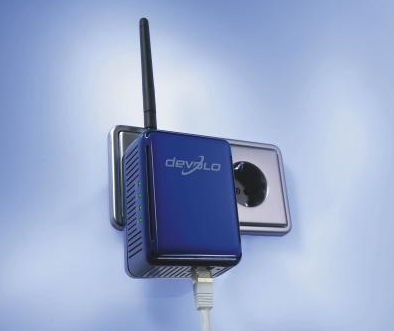PowerNET
Powerline was originally developed as an alternative technology to DSL. Since Powerline was not able to assert itself against DSL technologies, the focus was on the in-house area with home networks. The advantage of a Powerline network, marketed under the product name PowerNET, is that the power grid can be used as the network infrastructure in all homes.
Transmission takes place on the low-voltage network, onto whose mains voltage the data signals are modulated via a Powerline modem, called a PowerNET module. The data is thus available in-house at any power outlet, provided that the three phases of the three-phase current are bridged at the meter box with PLC modems.
The bandwidth available for transmission depends on the quality of the power grid and is said to be 5 MHz to 8 MHz. This is sufficient for a data rate of 10 Mbit/s to approx. 14 Mbit/s. To avoid interference from consumer equipment, PowerNET uses Orthogonal Frequency Division Multiplex( OFDM) and automatic frequency switching. Since the transmission is transparent, Ethernet networks can be set up in this way. In addition, communication via PowerNET can be made tap- proof using DES encryption.
The data rate of PowerNET is 14 Mbit/s; up to 16 personal computers(PCs) can be connected. Communication is secured by 56-bit DES encryption.

